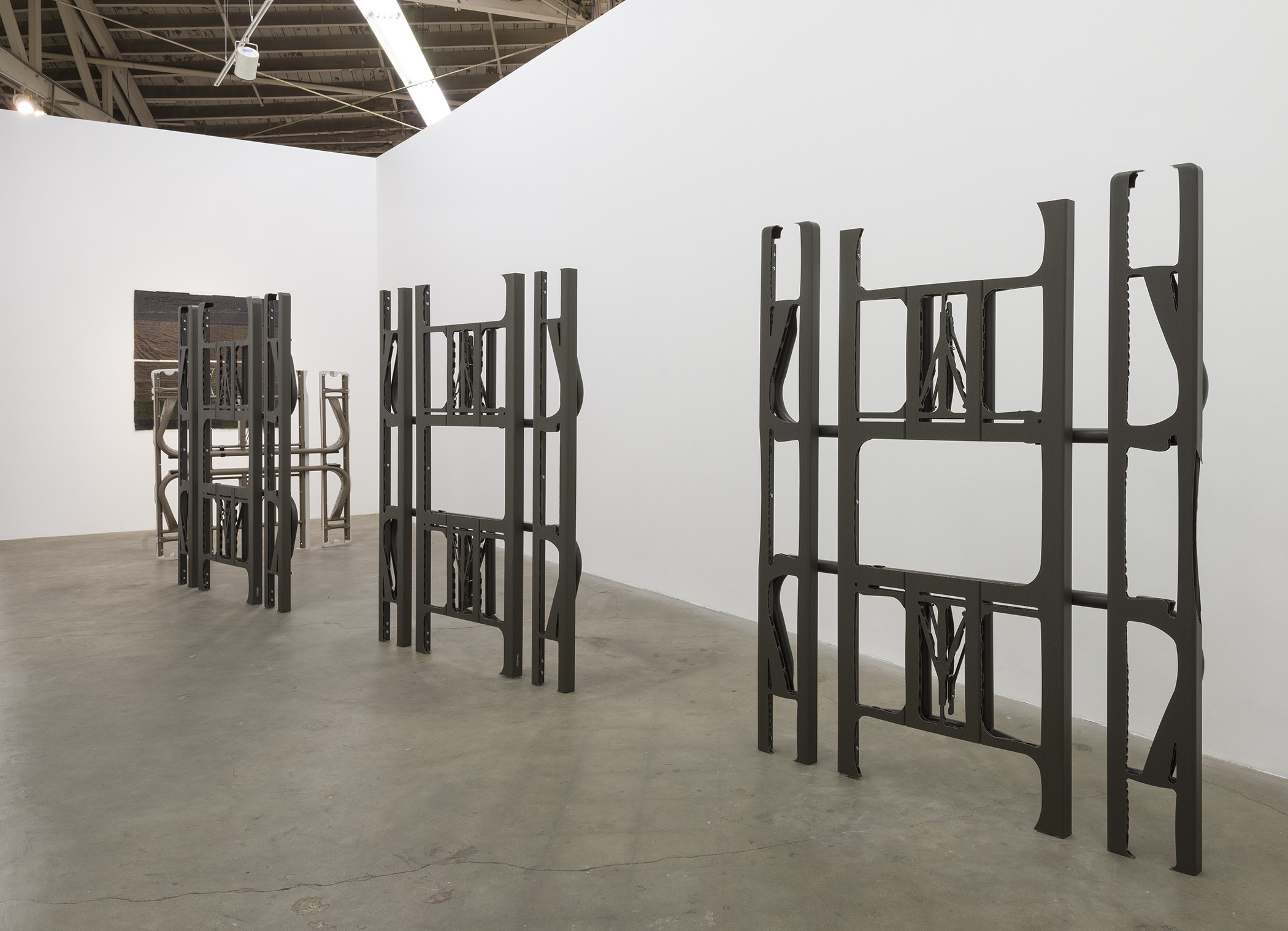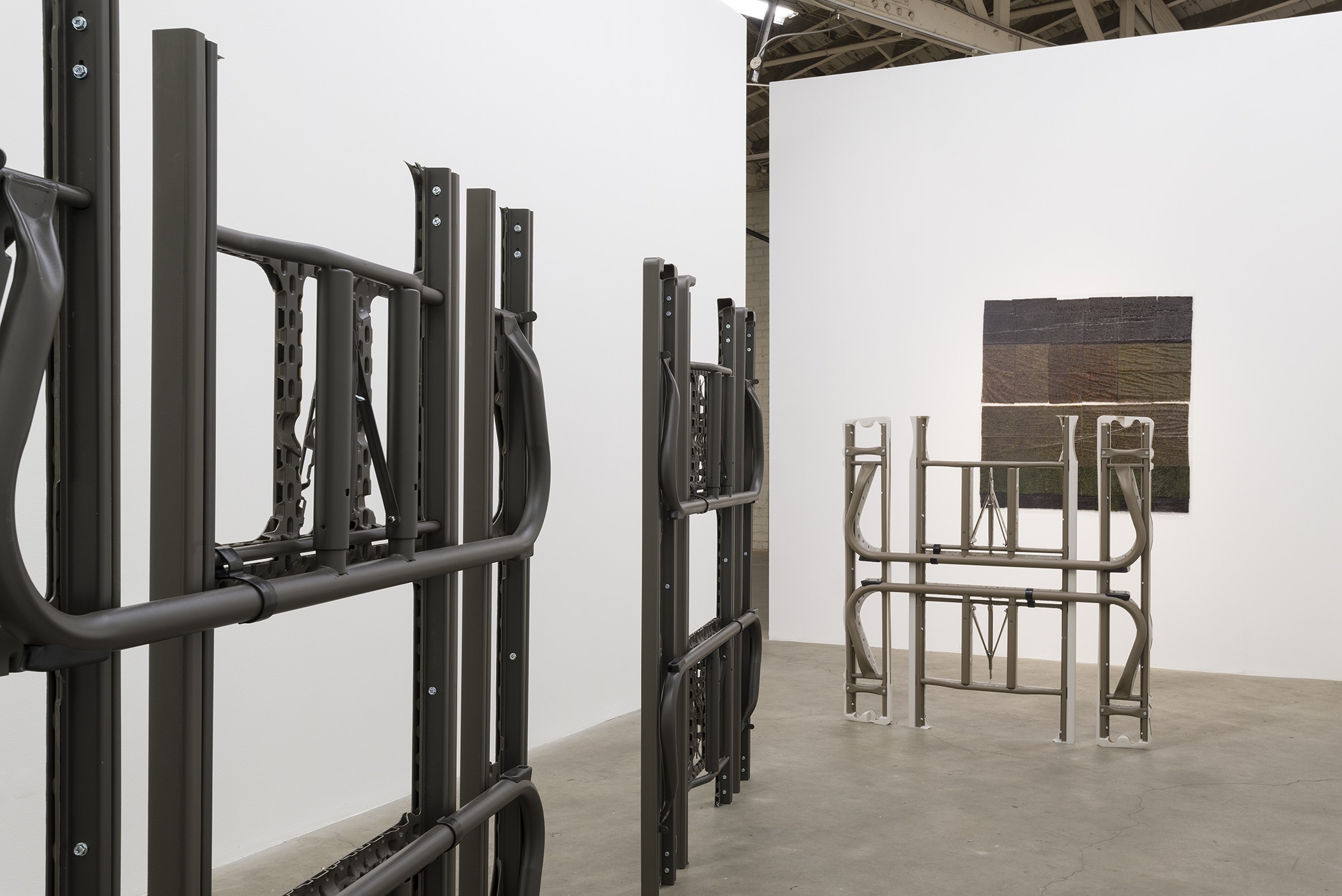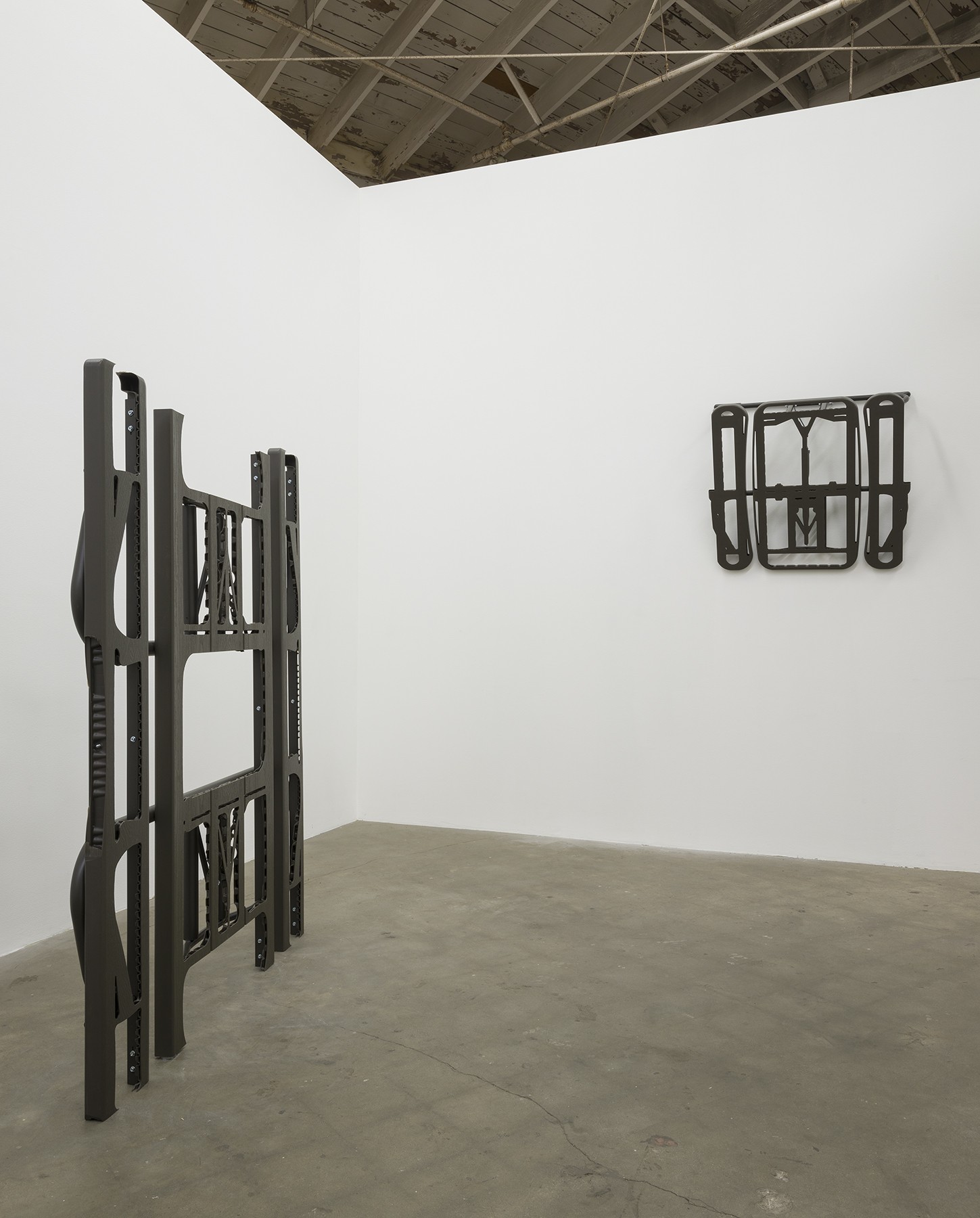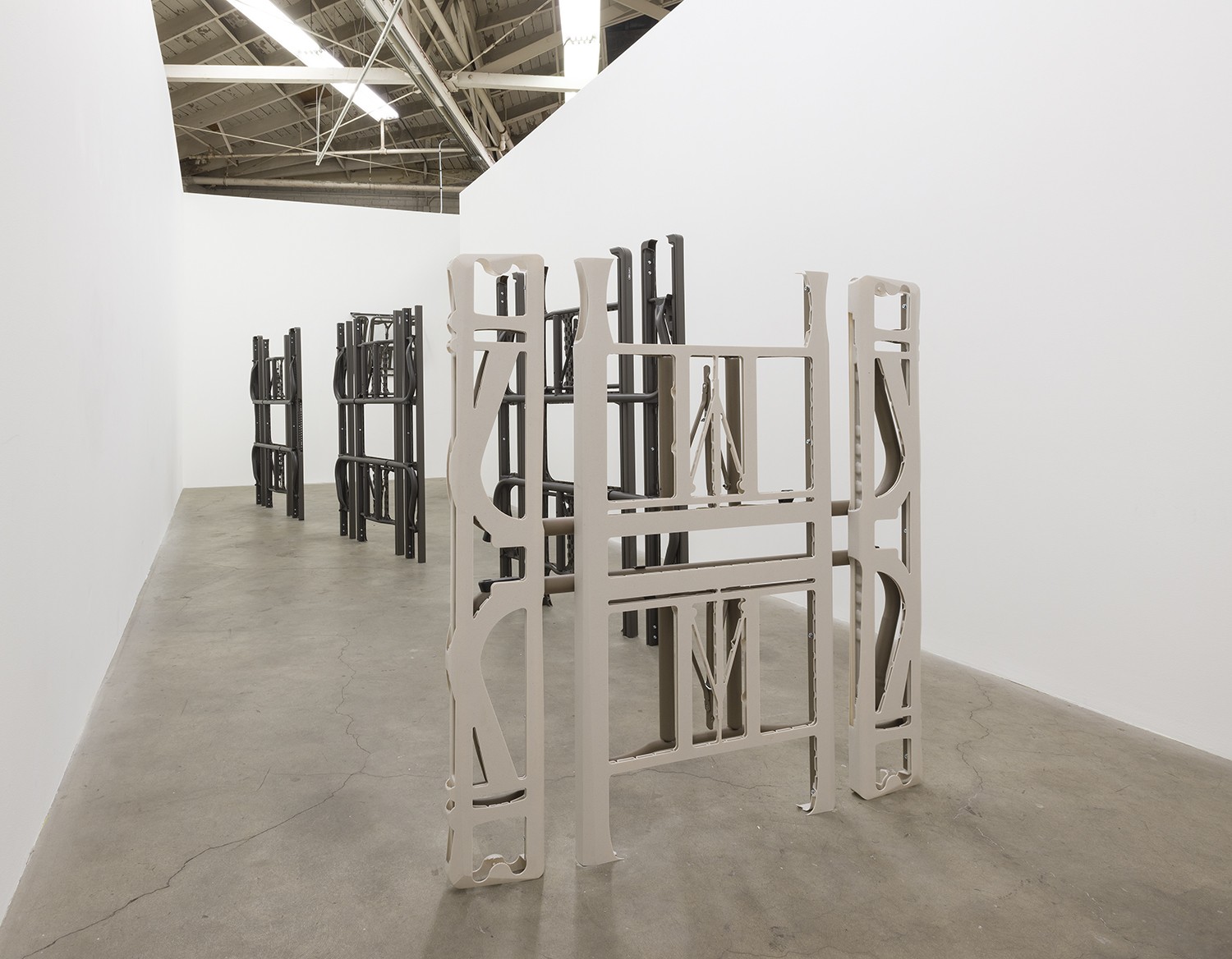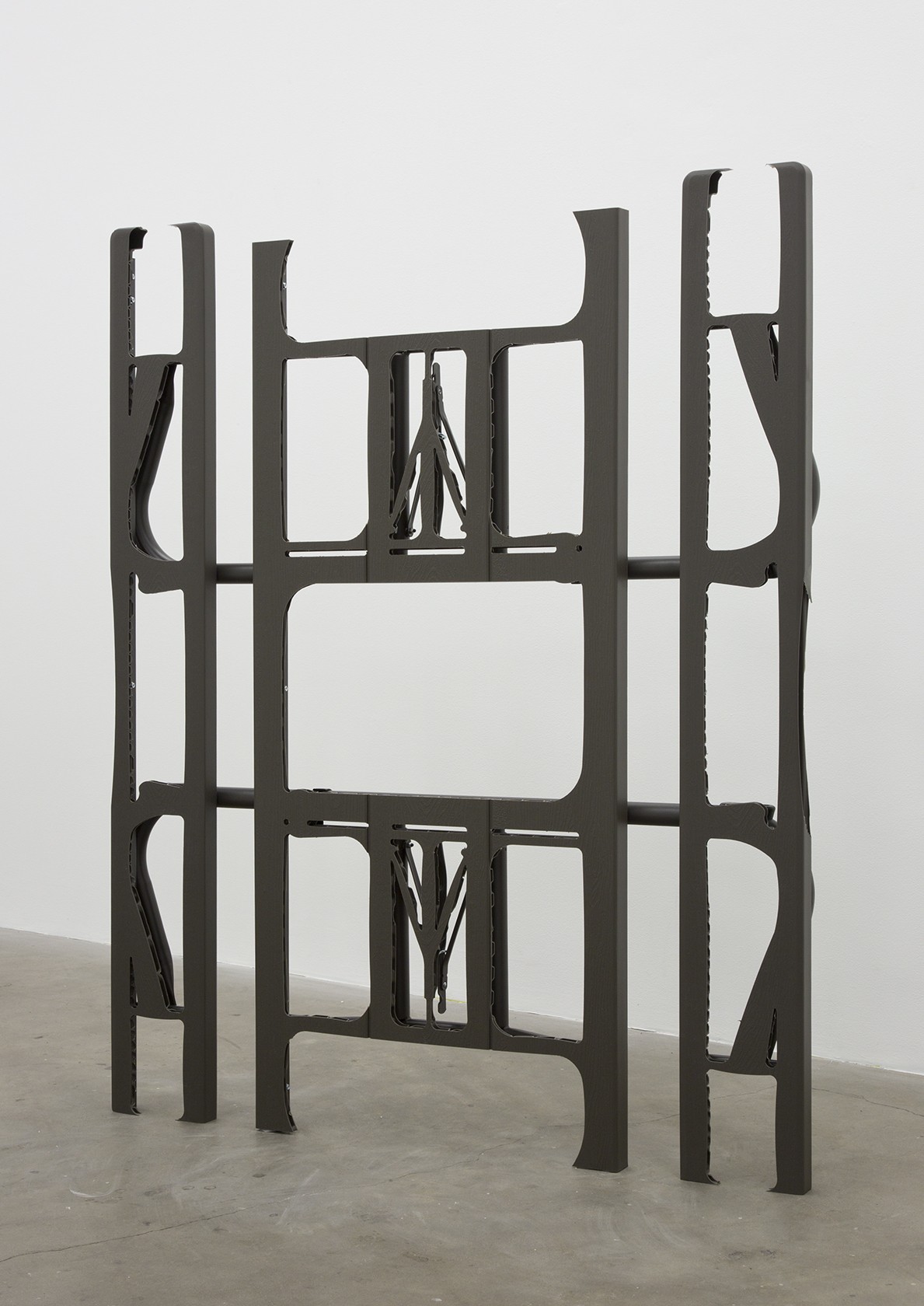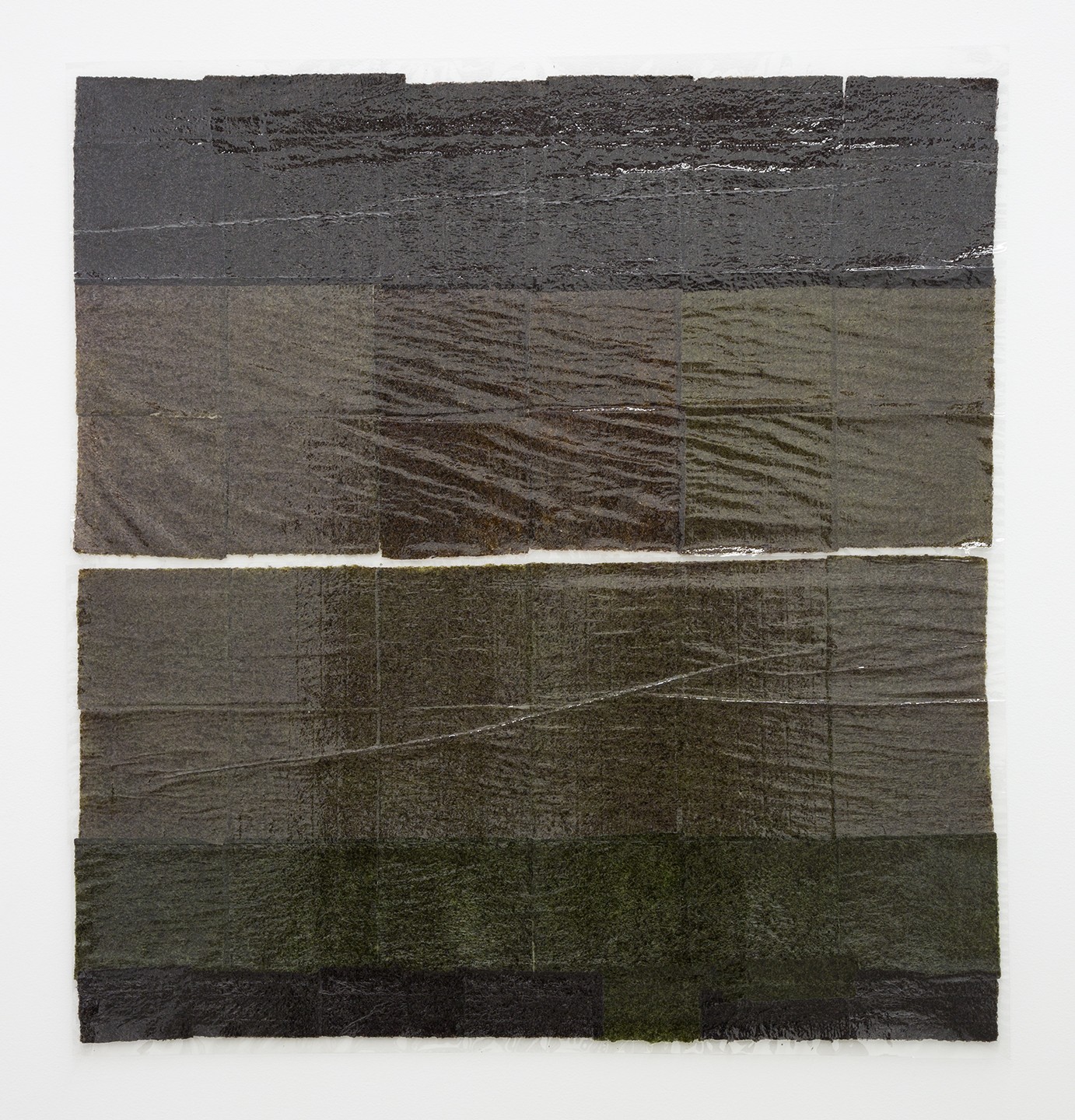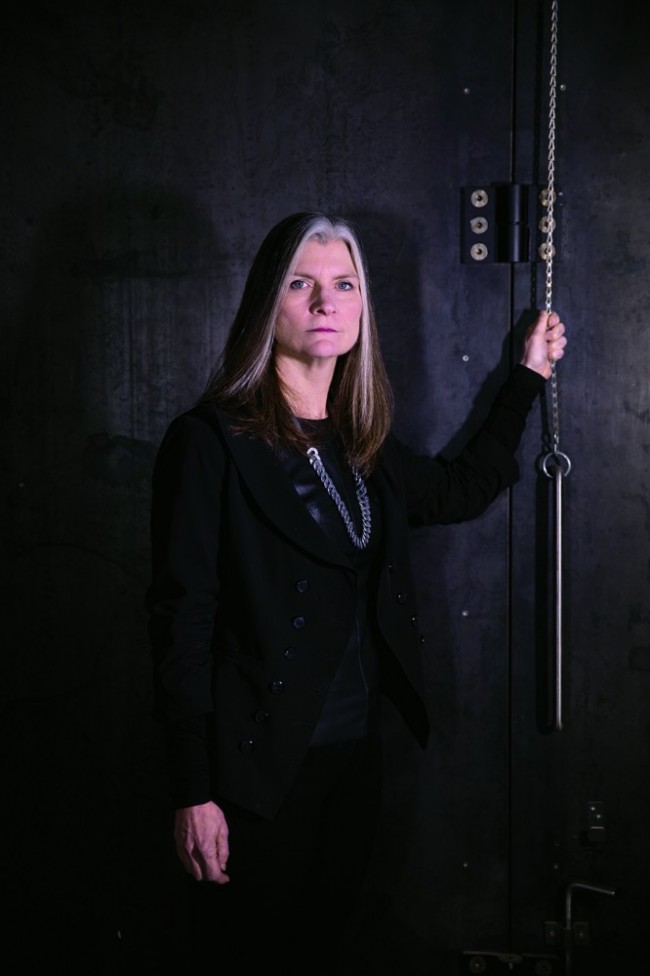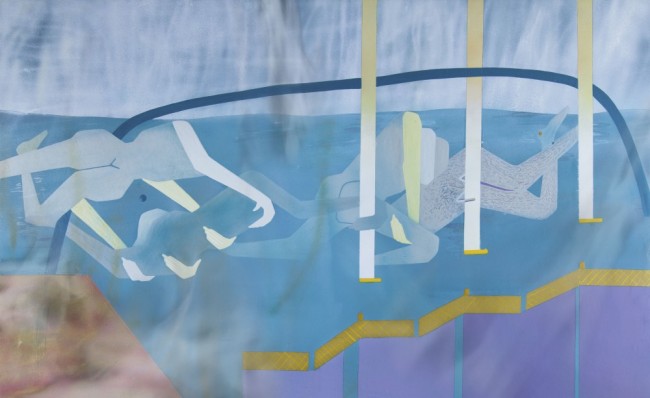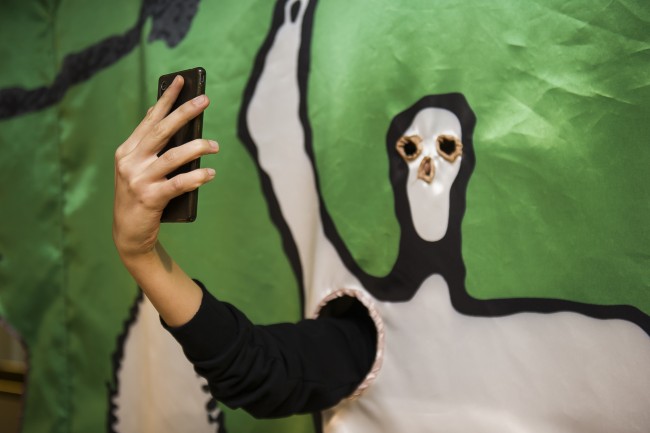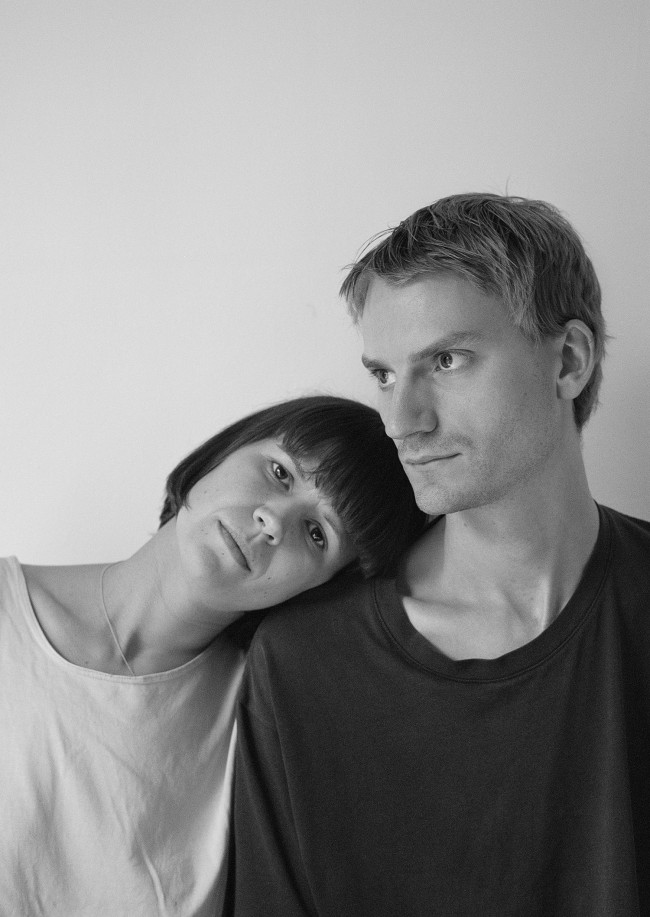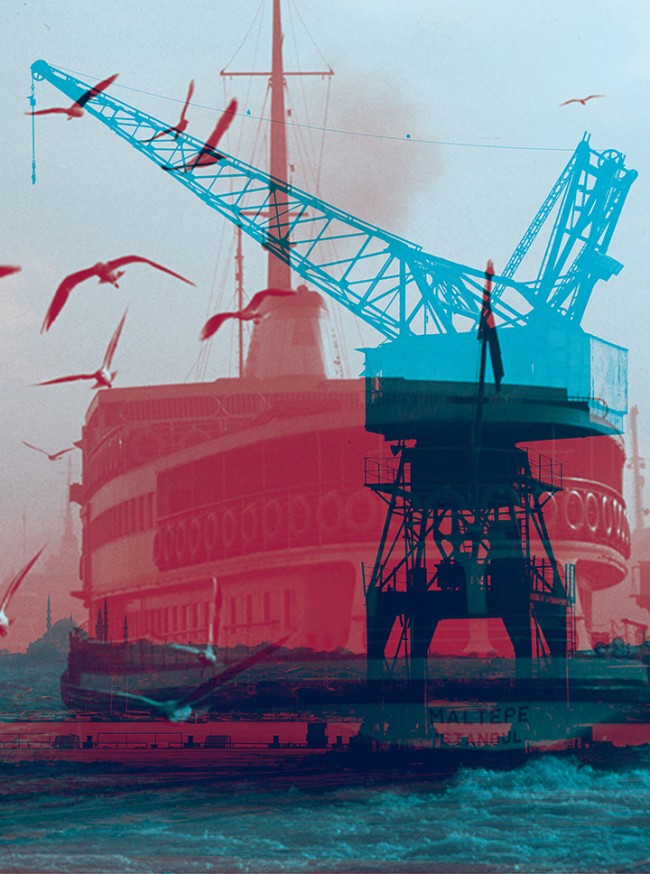MARROW INTO MOXIE: ARTIST ANNE LIBBY COMPLICATES THE ANIMAL-MACHINE BINARY
Known for his neo-vitalist views on entelechy, the German philosopher and biologist Hans Driesch was the first person to clone an animal. In his work with sea urchins, he hypothesized that the division of cell embryos would result in the development of distinct parts. Instead, each developed into a complete sea urchin. Ultimately these tests led to the philosophy that a defining characteristic of a machine, as opposed to life, is its inability to function when parts are removed.
In artist Anne Libby’s exhibition Marrow into Moxie at Night Gallery in Los Angeles, these distinctions between life and machine are explored and questioned. Libby’s autonomous freestanding works acutely dissect the narrow space of the gallery, guiding the viewer’s body through a range of tapered, negative spaces. The sculptures, which begin as polyethylene and steel picnic tables, have been rendered technically and cut through by what seems to be a post-digital process. Reductively skeletal, the surfaces of the tables mirror the forms of the folded underside in an almost performative act. Libby refers to the transformation as the creation of “conscripts” in the text that accompanies the show. This militaristic tone is further enacted by the brown monochromatic pieces which march upright across the space in a row.
Despite clear reference to the mechanical, the “tables” are anthropomorphized and scarab-like, at moments, winged. Addressing Driesch’s work, her process of removal displaces function to reveal latent annelid-like creatures that pose as both biotic and machine-like. Libby’s titles include the phrase “Die, Regenerate or Multiply,” blurring the line between the multiple divergent outcomes of an experiment that is scientific or artistic.
Making use of things from the world that bear the imprint of explicit function is thematic here. Libby collages edible seaweed together to make a slicked quilt-like surface which hangs like a camouflage battle flag. Upon closer inspection, the texture of the seaweed begins to mimic the patterns on the tables which begin to reflect the floor plan. The logic deployed is absurd yet rational. Libby does the work for us, and ultimately the artworks appear in traditional object based formats, sculpture and painting.
Images courtesy of Night Gallery.

